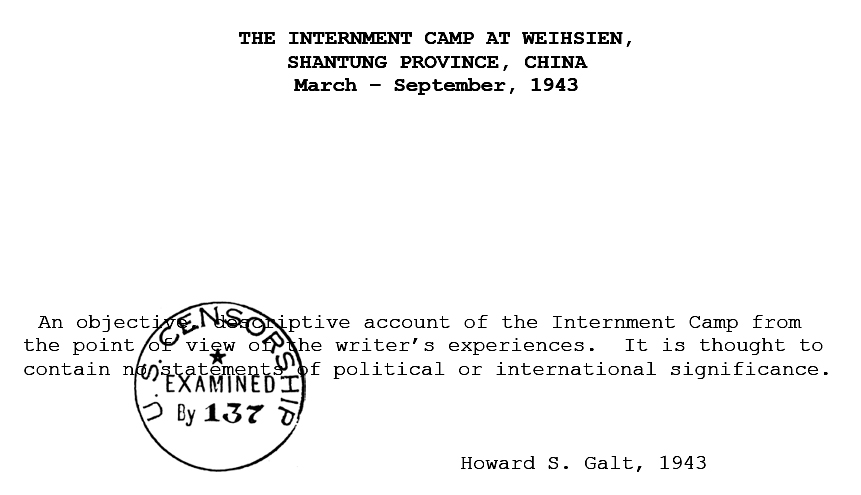
- by Howard S. Galt
[Excerpts] ...
 Inside the front gate on the right was a large church building, designated by the Japanese authorities as the “assembly hall” for the camp.
Extending southward from the front gate, and from the church yard, were two straight roads, bordered on both sides with many small courts in which were long, low one-storied buildings for students’ dormitories. Beyond the southern ends of these two roads was an extensive open area occupied by two large three-story buildings.
Inside the front gate on the right was a large church building, designated by the Japanese authorities as the “assembly hall” for the camp.
Extending southward from the front gate, and from the church yard, were two straight roads, bordered on both sides with many small courts in which were long, low one-storied buildings for students’ dormitories. Beyond the southern ends of these two roads was an extensive open area occupied by two large three-story buildings.
These were constructed nearly forty years earlier for the union college located here, which later moved to Tsinan to become Cheeloo University.
Still further south were several smaller courts containing the two-story residences of the missionaries.
These residences were occupied by the Japanese authorities and so were “out of bounds” for camp residents.
A large area to the east of the general area just described was occupied by a variety of courts and buildings, dormitories or classrooms, for schools or for other purposes. Still further east on the border of the compound was the large three-story (plus basement) hospital, in the midst of its own rather ample court, large enough for a tennis court, a basketball court, and a garden.
[excerpt]
The tasks of the division in charge of medical supplies were quite different. After the initial opening of the hospital, orders for supplies for the most part had to be placed in Tientsin or Tsingtao in care of the Swiss Consuls.
When these arrived they had to be carefully conveyed to the hospital and distributed for use or placed in the pharmacy.
[excerpt]
The operation of the hospital and the general medical and sanitary care of the camp were the functions of this committee.
There were a considerable number of doctors in the camp, among them a chief surgeon and a prominent physician from the Peking University Medical College. Although there was quite a little illness in camp and the resources of the Hospital were fully used, there was no serious epidemic and on the whole health conditions were quite good.
One of the senior physicians was a competent and experienced oculist, and there was present a competent and experienced dentist.
Offices for them were provided at the Hospital and thus the corresponding special needs of camp residents were cared for.
As to general sanitation the deficiencies in the sanitary installations of the Japanese were the cause of extra difficulties, dangers, and unpleasant tasks, but with careful safe-guarding, and general cooperation, the dangers were overcome.
[further reading]
http://www.weihsien-paintings.org/DonMenzi/ScrapBook/1943-Galt_Weihsien-1.pdf
#








